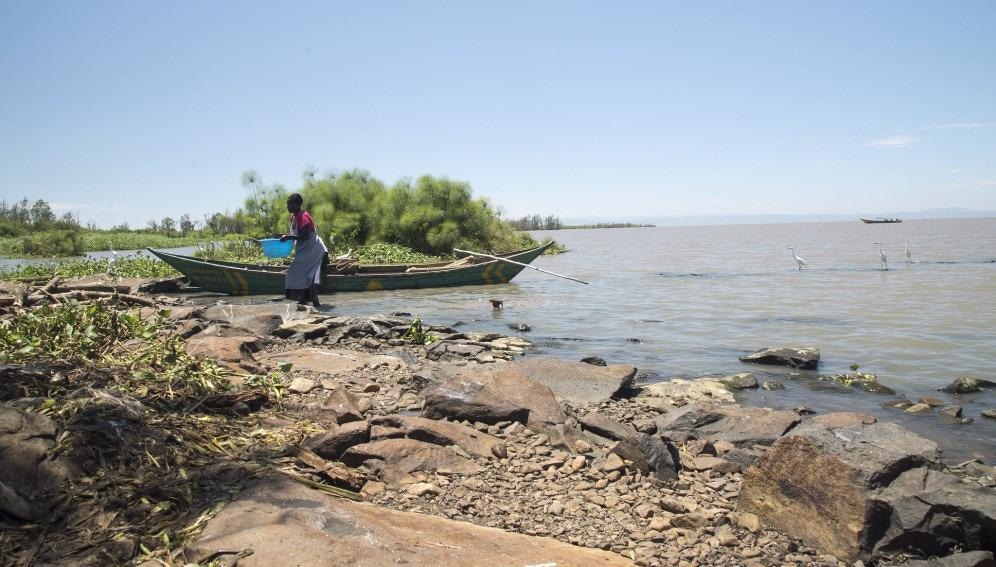According to a new study performed, countries are taking steps to connect climate change adaptation plans with intrusive species management. This is despite the possible financial advantages of doing so.
 Water hyacinth is considered a very aggressive invasive species. Image Credit: Peter Kapuscinski/World Bank, CC BY-NC-ND 2.0.
Water hyacinth is considered a very aggressive invasive species. Image Credit: Peter Kapuscinski/World Bank, CC BY-NC-ND 2.0.
As per the International Union for Conservation of Nature, climate change promotes the spread and establishment of several invasive alien species — plants, animals or other organisms that are initiated into places outside their natural range. Also, it creates new chances for them to thrive.
However, the study involving a review of 48 policy documents and strategies in Ghana, Kenya, Pakistan and Zambia, determined both policy and capacity gaps in reacting to the significant links between invasive species management and biodiversity and climate action on mitigation and adaptation.
The Glasgow Climate Pact that was accepted at the UN climate summit COP26 in 2021 needs countries to “revisit and strengthen” their 2030 targets by the end of 2022. This is to align them with the Paris Agreement’s temperature goals.
As countries look to develop new biodiversity action plans, invasive species management plans, and submit enhanced climate actions [to meet Paris Agreement goals], there is an opportunity for more coordinated policy approaches and implementation strategies.
Jonathan Casey, Study Author and Climate Change Manager, Centre for Agriculture and Bioscience International
CABI is the parent organization of SciDev.Net.
Casey adds that the present lack of coordination diminishes efficient action, and can result in duplication of activities, ineffective use of resources and clashes between various sectoral policy methods.
A highly coordinated response can offer amazing chances for locally-led action and decentralized governance. Also, it could promote financial support for handling invasive species. The study was published in the CABI Agriculture and Bioscience journal.
The study states that while there are fairly reliable policy responses to climate change, biodiversity, and invasive species, policies are primarily created and performed separately, with little thought to the links between such problems and the chances for reinforcing implementation throughout the policy regions.
Casey states that his findings are in accordance with those of the recent Sixth Assessment Report on climate adaptation by the Intergovernmental Panel on Climate Change (IPCC). This stresses the intense interconnections present between climate and biodiversity.
Kenneth Kemucie Mwangi, climate monitoring and early warning expert with the Intergovernmental Authority on Development’s Climate Prediction and Applications Centre in Kenya, stated that several countries and sectors help fulfill the effects of climate change — droughts, pest and disease invasion, floods — as separated environmental difficulties before identifying climate change as one of the reasons of the difficulties.
Policies [over] years have been created in isolation, addressing the symptoms but not the cause. Climate change national adaptation plans are, however, being revised to have sectors such as biodiversity, agriculture, energy, water included.
Kenneth Kemucie Mwangi, Climate Monitoring and Early Warning Expert, Intergovernmental Authority on Development’s Climate Prediction and Applications Center
Mwangi thinks that the implementation of the national climate change funds, as an adaptation tool that is combined with a country’s fiscal planning can result in centralized coordination even though some interventions might be prioritized over others.
Innocent Ngare, a research fellow in climate education and urbanism at the School of Environmental Studies at Kenya’s Kenyatta University, states that while there are measures to fulfill climate change shocks via national adaption plans, little is done to include the risks of invasive species.
As invasives check in and spread, the worst-case scenario is exposure of food crops to more climate shocks if invasives weaken them further. Productivity will plunge by 30% and could deepen further in the next decade. Every country should gear towards having critical invasive species control pathways linked to climate change.
Innocent Ngare, Research Fellow, Climate Education and Urbanism, School of Environmental Studies, Kenyatta University
Journal Reference:
Casey, J. P., et al. (2022) Policy coherence for national climate change adaptation and invasive species management in four countries. CABI Agriculture and Bioscience. doi.org/10.1186/s43170-022-00077-8.